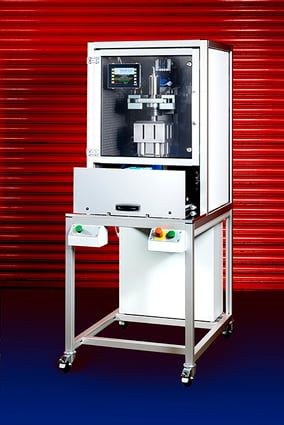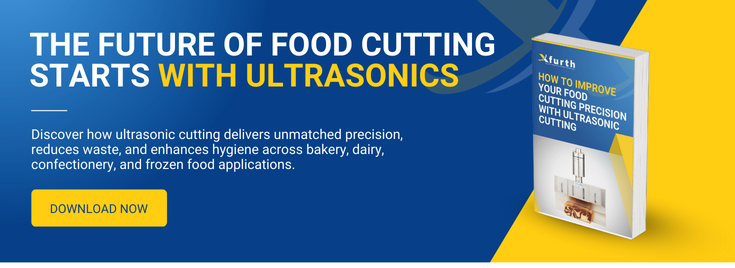
Selecting the right plastic materials is the foundation of successful welding operations, yet it remains one of the most misunderstood aspects of thermoplastic joining.
With hundreds of plastic formulations available and complex compatibility requirements, manufacturers often struggle to make informed material choices that ensure reliable weld quality. Understanding the fundamental differences between plastic types, their welding characteristics, and compatibility limitations is essential for achieving consistent, high-strength joints across all welding processes.
The Fundamental Rule: Like with Like
The cardinal principle of plastic welding remains unchanged: you must weld like plastic to like plastic. This fundamental requirement stems from the molecular nature of thermoplastic bonding, where polymer chains must be chemically compatible to achieve intermolecular diffusion and entanglement. Attempting to weld incompatible materials results in weak interfaces, poor adhesion, and potential joint failure under operational stresses.
However, this seemingly simple rule becomes complex when considering the vast array of plastic formulations, additives, and processing variations that can affect compatibility even within the same polymer family.
Amorphous vs Semi-Crystalline: The Critical Distinction
The molecular structure of thermoplastics fundamentally determines their welding characteristics, dividing materials into two primary categories with distinctly different behaviour during heating and joining processes.
Amorphous Plastics
Amorphous plastics by definition means the molecules inside do not have a defined shape or form. As a result, amorphous plastics are harder. At Trinetics Group, we have found that Amorphous plastics are much easier to weld due to its random configuration, because when it is heated, it melts together at the molecular level.
Common amorphous materials include ABS, polycarbonate (PC), PMMA (acrylic), and polystyrene (PS). These materials exhibit several welding advantages: they gradually soften over a temperature range rather than having sharp melting points, making them more forgiving during heat application. The randomized molecular level of Amorphous plastic works well when ultrasonic welding is applied, because as the horn increases the amount of movement of the molecules, it bounces the sound waves around a lot, making it much easier to weld.
Amorphous plastics support far-field welding techniques where the energy source can be positioned more than a quarter-inch from the joint interface, providing greater design flexibility for complex assemblies.
Semi-Crystalline Plastics
Semi-crystalline materials like polypropylene (PP), polyethylene (PE), and nylon present different welding requirements due to their highly ordered molecular structure. Semi-crystalline plastics, on the other hand, have a highly ordered molecular structure with a sharp melting point.
These materials require near-field welding applications where energy sources must be positioned less than a quarter-inch from the joint. The ordered molecular structure means when using ultrasonics to weld Semi-crystalline plastics, the vibration sound waves resonate more uniformly across the plastic which require increased wattage that produces more energy to weld.
Material Compatibility Matrix
Understanding which materials can be successfully welded together requires knowledge of compatibility relationships. ABS, an amorphous plastic, is compatible with PVC and PMMA. PP, a semi-crystalline plastic, is only compatible with itself.
Most amorphous plastics demonstrate good compatibility with other amorphous materials that have similar melting characteristics. However, mixing amorphous and semi-crystalline materials presents significant challenges due to their vastly different thermal and molecular properties.
Temperature Requirements
The welding temperature needs to be within about 20°C for the two materials to be weldable. This narrow temperature window explains why many material combinations that seem logically compatible actually cannot be successfully welded.
For practical application: ABS (acrylonitrile butadiene styrene) Can be welded well and with ease. The welding temperature is between 270 and 310 °C. PS (polystyrene) Can also be welded well and with ease. The welding temperature is between 270 and 310 °C.
The Impact of Additives and Fillers
Real-world plastic formulations rarely consist of pure polymers. Additives, fillers, and reinforcements significantly affect welding performance and must be carefully considered during material selection.
Filler Effects on Weldability
Additions of filler materials can drastically affect the weldability of the plastic. This also depends on the type of welding process used. The impact varies significantly by filler type and concentration.
Glass fibers and mineral fillers like talc can actually improve welding in some applications. Ordinary mineral fillers, such as fiberglass and talc, increase the ability of plastics to conduct vibrations and improve the ultrasonic welding properties of plastics, especially for semi-crystalline plastics. In general, 10% to 20% of glass fiber will significantly improve the ultrasonic welding performance of plastics.
However, excessive filler content creates problems. Filler content exceeding 35% may encounter a substantial decrease in weldability. At high concentrations, insufficient polymer material remains available for molecular bonding at the joint interface.
Critical Additives to Consider
White pigments containing titanium dioxide present particular challenges. Titanium dioxide in white pigments is an inorganic substance with chemical inertia. It acts as a lubricant and reduces solderability if used in excess of 5%.
Flame retardants can comprise up to 50% of material weight, dramatically reducing available thermoplastic content. When welding these materials, it is necessary to use high-power equipment, higher than the usual amplitude and to modify the joint design to increase the number of weldable materials at the joint.
Moisture Content: The Hidden Factor
Hygroscopic materials present special challenges that are often overlooked during material selection. If the plastic contains too much water, during the ultrasonic welding process, when the temperature reaches the boiling point of water, the water in the plastic evaporates and vaporizes, and the welded interface is foamy, which makes the ultrasonic welding strength low.
Materials particularly affected include nylon (PA), ABS, and PMMA. These materials should be welded immediately after moulding or properly dried before welding to prevent bubble formation and weak joints.
Practical Material Selection Guidelines
High-Performance Combinations
ABS remains one of the most versatile materials for welding applications, demonstrating good compatibility with PC and PMMA whilst offering excellent processability. Polypropylene, though limited to welding with itself, provides excellent chemical resistance and is ideal for applications requiring hermetic sealing.
Materials Requiring Special Consideration
Semi-crystalline materials like nylon and POM (acetal) require careful parameter optimisation and often benefit from near-field welding approaches. Glass-filled formulations generally improve weldability when filler content remains below 20%.
Materials to Approach with Caution
Highly filled materials (>30% filler content), heavily plasticised formulations, and materials with significant flame retardant content require specialised welding approaches and may necessitate joint design modifications to achieve acceptable strength.
Strategic Selection Process
Successful material selection for welding applications requires a systematic approach. Begin by identifying the primary performance requirements: chemical resistance, temperature capability, impact strength, or regulatory compliance. Match these requirements to base polymer families, then evaluate specific grades for welding compatibility.
Consider the entire supply chain impact: will multiple suppliers provide consistent formulations? Are recycled content requirements compatible with welding performance? Does the application require dissimilar material joining that might necessitate mechanical fastening alternatives?
Conclusion
Understanding plastic types for welding extends far beyond simple polymer identification. Success requires comprehensive knowledge of molecular structure effects, additive interactions, and compatibility limitations. The investment in proper material selection pays dividends throughout the manufacturing process, ensuring consistent quality whilst avoiding costly production delays.
As plastic formulations continue evolving with sustainability requirements and performance demands, maintaining current knowledge of material welding characteristics becomes increasingly critical for manufacturing success.
From compatibility assessments to process parameter optimisation, Xfurth provides the technical support needed to ensure successful material selection and implementation. Our extensive experience across automotive, medical, and industrial applications enables us to guide you through the complexities of plastic material selection for reliable welding results.
Contact Xfurth today to discuss your material selection challenges and discover how our expertise can enhance your plastic welding operations. Let us help you navigate the complexities of thermoplastic compatibility and achieve consistent, high-quality welded assemblies.






